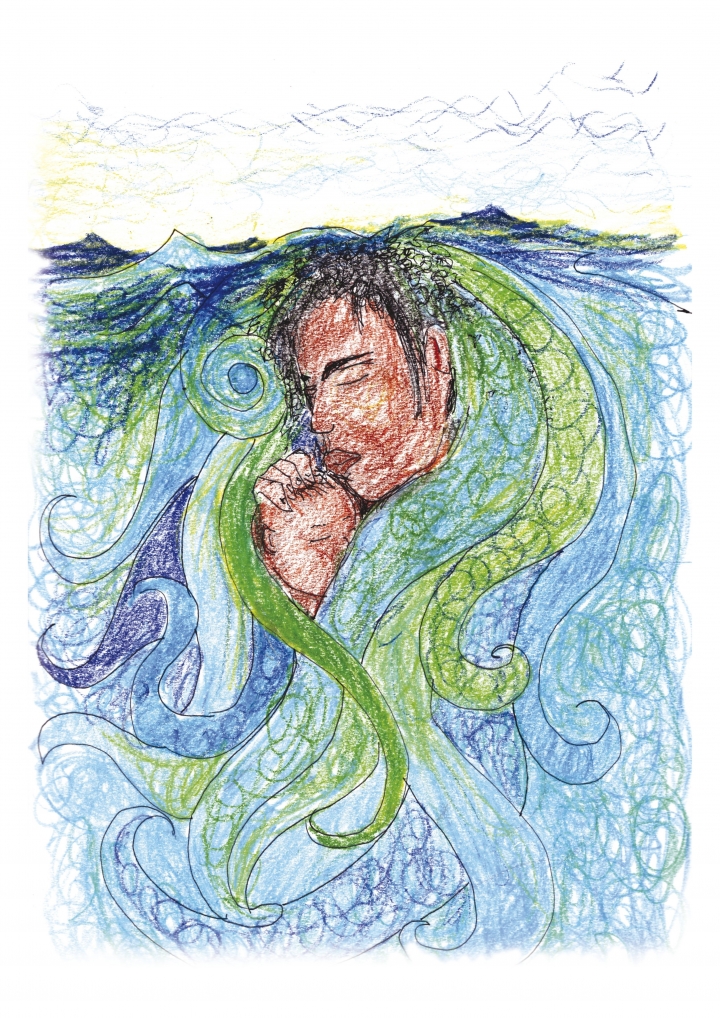
Read: John 20:1-18
Then Peter and the other disciple set out and went toward the tomb. The two were running together, but the other disciple outran Peter and reached the tomb first. He bent down to look in and saw the linen wrappings lying there, but he did not go in. Then Simon Peter came, following him, and went into the tomb. He saw the linen wrappings lying there, and the cloth that had been on Jesus’ head, not lying with the linen wrappings but rolled up in a place by itself. Then the other disciple, who reached the tomb first, also went in, and he saw and believed; for as yet they did not understand the scripture, that he must rise from the dead. Then the disciples returned to their homes (John 20:3-10, NRSV).
Resurrection. It’s a word we don’t use very often—except, perhaps, on Easter Sunday.
Literally, it means “stand up” or “stand again.” But none of the people who showed up at the tomb that first Easter morning expected to see Jesus “stand again.” A corpse just doesn’t do that.
Jesus, of course, is the main character in this passage, but the story is told in such a way that we see it unfold from the perspectives of three people who were close to him: Mary Magdalene, Peter, and “the other disciple, the one whom Jesus loved,” (aka John). As we see the story again through their eyes, I invite you to ask: which character do I identify with most closely? Who would I be if I could step back into the story of that first Easter morning?
Mary Magdalene sets the story in motion. She gets up at the crack of dawn. (One wonders if she’d slept at all.) She goes to the tomb while it’s still dark. What were her plans? To mourn, certainly. To weep, obviously. Perhaps, as two of the other gospels suggest, she brought spices with which to anoint Jesus’ body. That was a traditional practice back then, but Jesus’ burial had been so hasty, there had been no time to perform that last act of love.
How had she planned to roll away the heavy stone blocking the door to the tomb? Perhaps—like most of us when we are lost in grief—she had no specific plan. Maybe this was one of those “I’ll cross that bridge when I come to it” situations. In any case, when she got there, she saw that the stone had already been removed.
But for Mary, this was not good news. Her first thought is that graverobbers have been there before her. That’s what she tells Peter and John when she runs back to tell them the news. “They have taken the Lord out of the tomb, and we do not know where they have laid him.” Oh, no, she must have thought. I didn’t think things could get any worse, but now they have!
Now let’s follow Peter and “the other disciple” as they run to the tomb. John outruns Peter. He stoops down and sees the linen wrappings from Jesus’ body. Perhaps that sight is enough to confirm Mary’s story. In any case, he can’t bring himself to go in.
Peter finally catches up and, leaving John at the entrance, strides into the empty tomb. Empty, that is, except for the linen wrappings that John had seen. Oh—and this is curious. He sees “the cloth that had been on Jesus’ head, not lying with the linen wrappings but rolled up in a place by itself” (v. 7). What did he make of that?
As he is pondering this, John finally summons the courage to enter the tomb. He sees the exact same things that Peter sees, but for him, something “clicks.” I wonder if it was that carefully rolled up piece of linen that had been on Jesus’ head. It must have been important somehow, since the gospel writer saw fit to include it in the way he’s told the story.
What could it have meant to John in that moment? I wonder…did it seem out of place? It doesn’t fit with the “graverobber” theory, does it? What graverobber takes the time to carefully roll up the piece of linen covering the face of the corpse? That just doesn’t make sense. Unless…unless it wasn’t graverobbers. What if—no, it couldn’t be. But what if it was Jesus himself who rolled up that piece of linen. It would be the first thing one would do, after all, if….
We can’t know for sure that this was the detail that turned John’s despair into hope, but this is the point at which “he saw and believed.” And then—almost as an explanation of why he and Peter had been so slow to assume Jesus’ resurrection—the gospel writer adds these words: “For as yet they did not understand the scripture, that he must rise from the dead” (v. 9). In spite of all the hints from the psalms and the prophets, in spite of Jesus’ own candid predictions about how he would be killed and would rise again after three days (Mark 9:31-32), they were still surprised.
Can you blame them? No—I don’t think we can. And the fact that they were not expecting the resurrection gives credence to the story. It was a lot to take in. So, they did the only thing they could do in the wake of such a surprise. They went home to think about it.
Mary Magdalene is still there, however, weeping outside the tomb. Eventually, she works up the courage to bend down and look in. Two angels look back at her and ask, “Woman, why are you weeping?” They may be angels, but from Mary’s perspective, this must have seemed like a really stupid question. So she tells them, “They have taken away my Lord, and I do not know where they have laid him.” Notice that she’s still working off the “graverobber” theory.
Even when she turns around and sees Jesus himself standing there, she doesn’t know it’s Jesus. To see Jesus “standing again” is so far from her expectations that she doesn’t recognize him. When he asks her why she’s weeping (again with the dumb question!) and whom she’s looking for, she assumes he must be the gardener. Then she wonders if he—the gardener—has taken Jesus’ body, so she tries to convince him to give it back.
It’s not until Jesus—very much alive—says her name that she recognizes him. “Mary” he says—and she finally realizes that she has to entertain a new theory. Not graverobbers, but resurrection.
So, which character are you most drawn to in this surprising story?
Is it Mary, loyal to the last, but so lost in grief that she needs two angels and the risen Lord himself to awaken her hope?
Is it John—the beloved disciple—who is quick to run to the tomb, quick to assume the worst, but also quick to consider what the evidence is telling him—that Jesus might actually be alive.
Or is it Peter—slow but steady. Maybe it takes him a little longer to get to the tomb, and maybe it also takes him a while to arrive at the same conclusion John comes to. But we know he eventually believes. He gets there eventually.
Or perhaps you are simply yourself, standing somewhere on the edges of this story, wondering what to make of it all.
Wherever we find ourselves in relation to this story of the first Easter, we should not downplay how shocking it is. Resurrection is not something one expects. It is not “natural.” It is not “status quo.” If we have come to see it as such, it’s simply a sign that we have become numb to the central shock of the story: Jesus, who was dead, is alive again. And because he lives, we—and all creation—have the hope of “standing again” with him.
Today, as you consider the story of the resurrection, feel the shock of it. Consider the wonder of it. Celebrate the hope in it. And then, live the rest of your life in light of it. Because after resurrection, nothing can ever be the same.
Ponder: Do you believe in the resurrection? What difference does/will that make in your life?
Pray: Don’t give up on us, Lord Jesus, even when we are slow to understand that you are very much alive.











